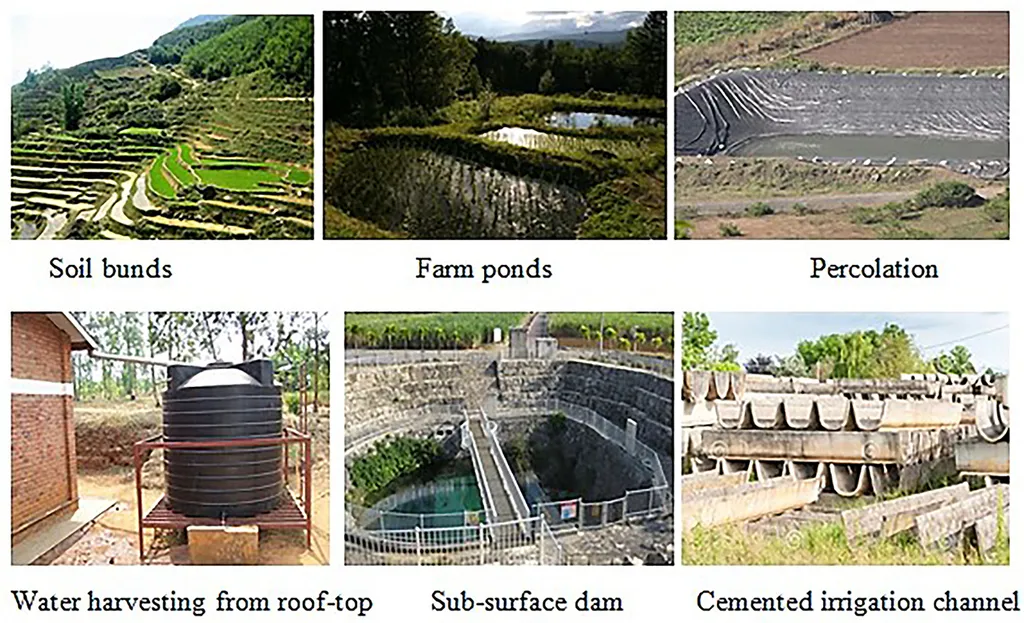In the heart of Jiangxi Province, Wannian County is becoming a beacon of innovation in soil and water conservation, offering a blueprint for sustainable agricultural and forestry development. A groundbreaking study led by ZHOU Le-qun from the Yangtze River Basin Monitoring Center for Soil and Water Conservation, Changjiang Water Resources Commission, has unveiled critical insights into the supervision of soil and water conservation activities in the region. The research, published in the *Journal of Yangtze River Scientific Research Institute*, highlights the urgent need for robust regulatory measures to mitigate soil erosion risks and ensure sustainable land use practices.
The study, which employed cutting-edge technologies such as 3S technology, automated image recognition, and GIS spatial analysis, provides a comprehensive assessment of the current state of soil and water conservation supervision in Wannian County. The findings are both alarming and enlightening. “The disturbance caused by agricultural and forestry development is significant,” noted ZHOU Le-qun, emphasizing the scale and intensity of land use activities. The research identified 1,048 disturbance patches covering a total area of 6,924.60 hectares, accounting for 6.07% of the county’s land area. This high level of disturbance, coupled with the limited implementation of soil and water conservation measures, poses a substantial risk of severe soil erosion.
One of the most striking findings is the high accuracy of the automatic extraction of disturbance patches. Through field verification, the research team found that only 28 out of 910 patches were actual production and construction projects, demonstrating an impressive accuracy rate of 96.92%. This technological advancement enables fast, automatic, and accurate identification of disturbance patches, paving the way for more efficient and effective supervision.
The spatial distribution of these activities reveals a uniform pattern across Wannian County, with slightly more disturbance in the eastern part. The main activities include economic forest projects, land consolidation projects, farmland improvement projects, and land requisition-compensation balance projects. Notably, over 93% of these projects are government-funded, highlighting the critical role of public investment in agricultural and forestry development.
However, the study also underscores the lack of effective soil and water conservation measures in these activities. Approximately 78% of the production and construction activities had not implemented such measures, raising concerns about the long-term sustainability of these projects. “It is essential to strengthen soil and water conservation supervision for these activities, particularly for government-funded projects,” stressed ZHOU Le-qun. The research calls for the development of regulatory measures and the establishment of supervision systems and mechanisms that feature “industry-based regulation and coordinated soil and water conservation.”
The implications of this research extend beyond Wannian County, offering valuable insights for the broader agricultural and forestry sectors. As the world grapples with the challenges of climate change and sustainable land use, the findings from this study provide a roadmap for implementing effective soil and water conservation measures. The integration of advanced technologies and the establishment of robust regulatory frameworks can significantly enhance the sustainability of agricultural and forestry development, ensuring the long-term health of our ecosystems.
In conclusion, the study led by ZHOU Le-qun and his team at the Yangtze River Basin Monitoring Center for Soil and Water Conservation serves as a wake-up call for the agricultural and forestry sectors. By leveraging cutting-edge technologies and implementing stringent regulatory measures, we can mitigate the risks of soil erosion and ensure the sustainable development of our land resources. The journey towards sustainable agriculture and forestry is fraught with challenges, but with innovative research and collaborative efforts, we can pave the way for a greener, more sustainable future.

